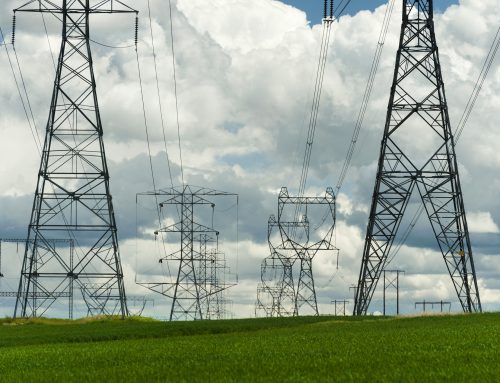How Advanced Software Solutions are Shaping the Future of Pipeline Engineering
By Kesley Price

In the dynamic field of pipeline engineering, technological advancements are revolutionizing the industry, driving efficiency, safety, and innovation. Advanced software solutions are at the forefront of this transformation, offering engineers powerful tools to design, analyze, and maintain pipelines more effectively than ever before. This blog explores the significant impact these innovative software solutions have on the future of pipeline engineering.
The Role of Software in Modern Pipeline Engineering
Software solutions in pipeline integrity design have become indispensable, offering comprehensive tools for every stage of the pipeline lifecycle. From initial planning and design to maintenance and regulatory compliance, advanced software platforms streamline complex processes, reducing the potential for errors and enhancing overall project efficiency. While companies like Technical Toolboxes are leading the way in providing these essential tools, many organizations in the energy sector still lag behind in digital maturity. According to a study by the Boston Consulting Group, the energy sector has ranked among “the least digitally mature,” historically placing more emphasis on engineering technologies over IT (BCG Report).
Pipeline Toolbox by Technical Toolboxes, for example, provides a suite of applications tailored to the needs of pipeline engineers. These tools facilitate accurate calculations, robust design, and efficient project management, making it easier to meet industry standards and regulations.
Enhancing Safety with Advanced Software
One of the most critical aspects of pipeline engineering is ensuring the safety and integrity of pipeline systems. Innovative pipeline engineering tools are crucial in this regard, enabling engineers to conduct thorough analyses and predictive maintenance.
RSTRENG+ software is a prime example of how technology can improve pipeline safety. By using advanced algorithms to assess the remaining strength of corroded pipelines, RSTRENG+ helps engineers make informed decisions about repairs and replacements, ultimately preventing potential failures and enhancing the longevity of pipeline infrastructure.
Compliance and Regulatory Adherence
The regulatory landscape for pipeline engineering is becoming increasingly stringent, with new rules and standards continually being introduced. Software solutions play a vital role in helping companies navigate these complexities.
Technical Toolboxes’ solutions are designed with compliance in mind, offering tools that assist engineers in adhering to regulatory compliance for pipelines like the PHMSA Mega Rule. This software not only simplifies the compliance process but also ensures that all necessary documentation and reports are accurately generated and maintained.
Trends in Pipeline Engineering Software 
The future of pipeline engineering is being shaped by several key trends in software development. Many engineers ask themselves, how can pipeline operators improve regulatory compliance with software solutions. The answer is with Cloud computing, artificial intelligence (AI), and machine learning are all playing pivotal roles in advancing the capabilities of pipeline engineering tools. Despite these advancements, the energy sector has historically been slower to adopt digital innovations (BCG Report). However, companies that embrace these trends can gain significant advantages.
- Cloud Computing: The shift to cloud-based platforms offers unparalleled accessibility and collaboration opportunities. Engineers can access vital pipeline project data visualization and reporting from anywhere, facilitating real-time collaboration and decision-making.
- Artificial Intelligence: AI-driven analytics provide deeper insights into pipeline performance and potential issues. Predictive maintenance algorithms, for instance, can forecast problems before they occur, reducing downtime and maintenance costs.
- Machine Learning: Machine learning models can analyze vast amounts of data to identify patterns and trends that might not be apparent to pipeline engineers through traditional analysis methods. This capability is invaluable for optimizing pipeline operations and enhancing safety protocols.
The Impact on Pipeline Design and Maintenance
Advanced Software solutions are not only transforming the way pipelines are designed but also revolutionizing maintenance practices. Predictive maintenance, powered by AI and machine learning, enables proactive identification and resolution of issues, minimizing disruptions and extending the lifespan of pipeline assets.
Furthermore, advanced design tools facilitate more precise and efficient pipeline construction. By leveraging detailed simulations and modeling, engineers can anticipate and mitigate potential challenges, ensuring smoother project execution and better resource management.
Conclusion
The future of pipeline engineering is undoubtedly being shaped by the continuous evolution of software solutions. From enhancing safety and improving compliance to driving efficiency and innovation, these advanced tools are redefining industry standards. As the pipeline sector continues to embrace these technological advancements, the benefits will be far-reaching, ensuring safer, more reliable, and more efficient pipeline systems for years to come.
For more information on the cutting-edge advanced software solutions transforming pipeline engineering, visit Technical Toolboxes.
Suggested Post
2026 API Compliance: What You Need to Know
2026 API Compliance: What You Need to Know By Kesley Price New rules. Tougher [...]
Corrosion Engineers: How Confident Are You in Your Remaining Strength Calculations?
Corrosion Engineers: How Confident Are You in Your Remaining Strength Calculations? By Kesley Price [...]
Why API Inspections Still Matter More Than Ever
Why API Inspections Still Matter More Than Ever By Kesley Price In an industry [...]










